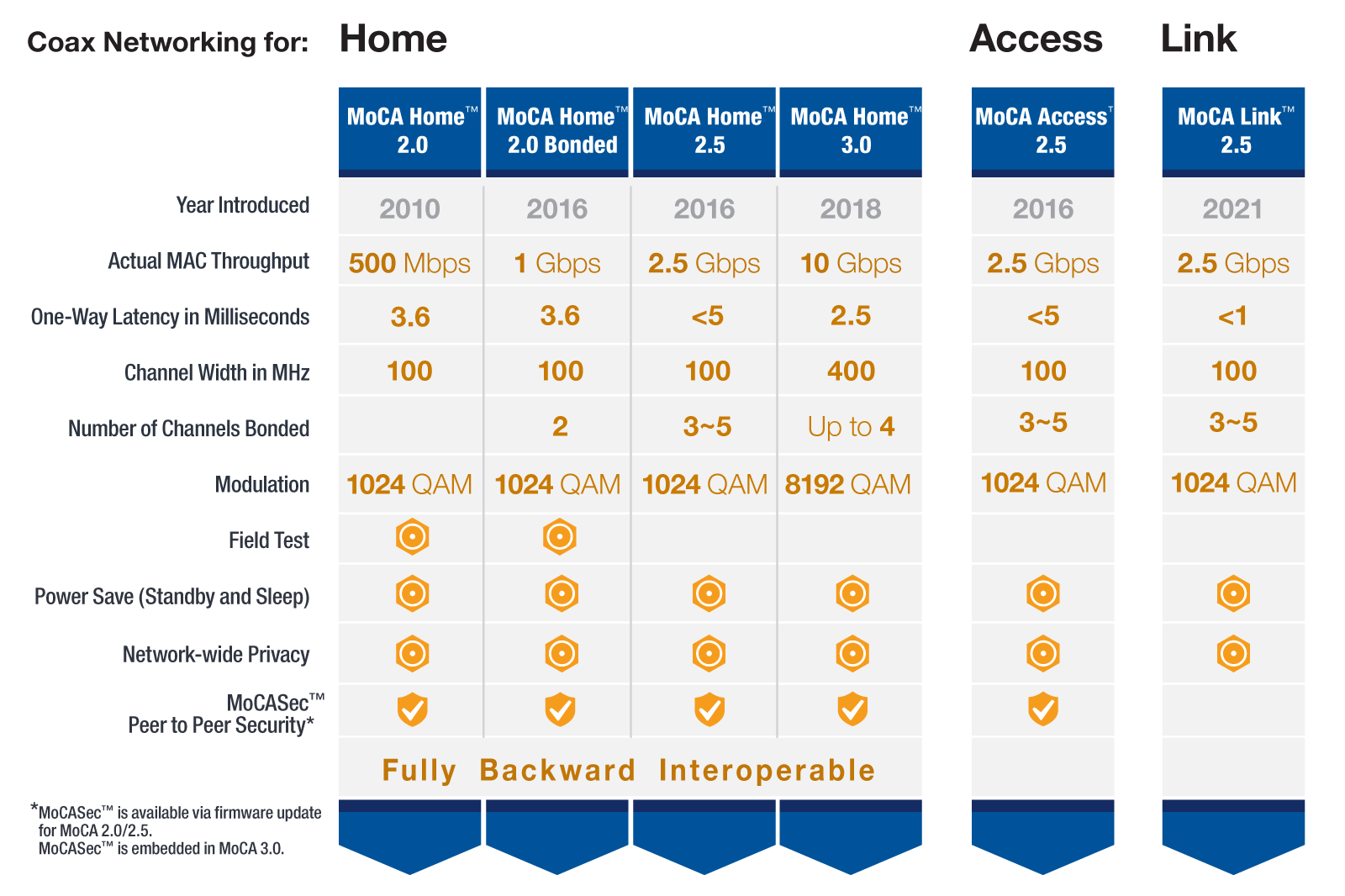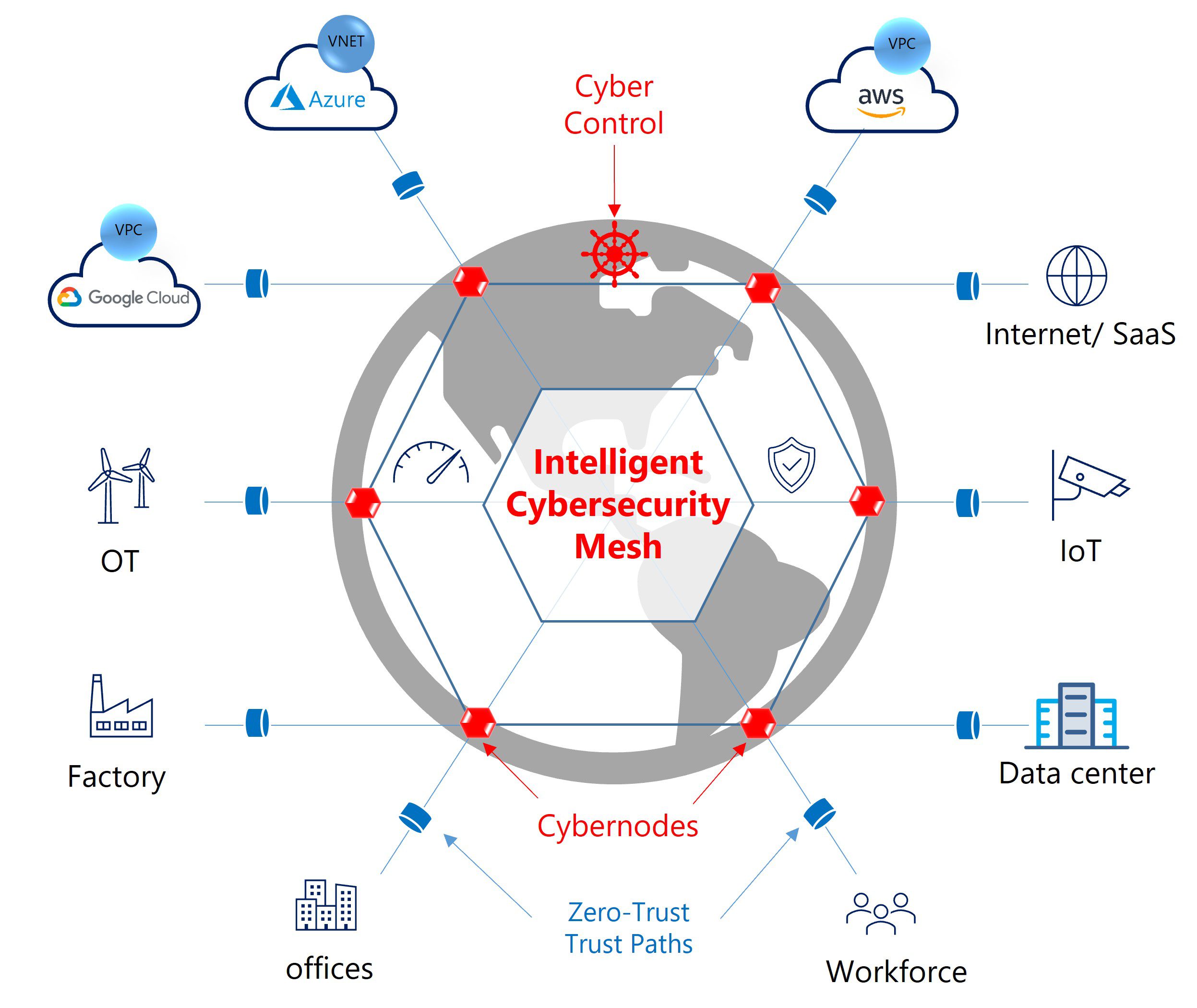Author: Alan Weissberger
NEC expands partnership with AWS for global 5G, digital government, hybrid cloud
NEC Corp. expanded its collaboration with Amazon Web Services (AWS) in areas that include global 5G, digital government, and hybrid cloud in support of accelerating digital transformation for business customers.
In November 2020, NEC and AWS concluded a corporate-level strategic collaboration agreement and have been developing offerings and strengthening delivery functionalities since then. NEC will now expand this collaboration and strengthen efforts in the following areas: global 5G, digital government, and hybrid cloud as follows:
1. Global 5G
NEC aims to develop an end-to-end 5G offering and to provide it globally by combining NEC’s high-performance cloud-native open 5G mobile core, OSS/BSS solutions, local 5G use cases etc., and AWS cloud and edge solutions. NEC will accelerate telecom carriers’ cloudification of network workloads and enhance digital transformation for enterprises by deploying 5G-based infrastructure and applications at the network edge. This combined solution stack will be supported by NEC’s system integration services to enable customers to efficiently deploy and scale 5G networks, enhance automation and drive significant improvement in operational economics.
2. Digital government
NEC has been certified as an AWS Government Competency Partner based on the strategic collaboration that started last year and its achievements for governments to date. Going forward, NEC will further strengthen its relationship with AWS and focus on developing and providing a menu of offerings to accelerate the digital transformation for government activities in Japan.
3. Hybrid cloud
By collaborating with AWS, NEC aims to develop and provide a menu of offerings that connects on-premises and cloud environments securely, at high speed, and with low latency. This will contribute to the acceleration of digital transformation through modernization that utilizes the customer’s existing information technology (IT) assets.
To accelerate these initiatives, the NEC Group has increased the number of AWS-certified engineers to 2,000 at present, aiming for 3,000, double the number from the start of collaboration in 2020, and firmly maintains one of Japan’s largest delivery capabilities for cloud projects. Going forward, NEC will continue to strengthen these positions and to ensure that it responds to customers’ digital transformation demands.
NEC also intends to enhance its hybrid cloud offering with support from AWS, providing services that connect both on-premises and cloud environments in order to support enterprise digital transformation strategies. NEC has already been building up expertise in this field. The Japanese IT vendor has increased the number of AWS-certified engineers to 2,000, up from 1,500 in November 2020, and is aiming for 3,000 in three years. Furthermore, NEC has been certified as an AWS Government Competency Partner and said it will focus on “developing and providing a menu of offerings to accelerate the digital transformation for government activities in Japan.”
………………………………………………………………………………………………………………………………………………………………………………………………………………………………………………………………………….
Comments from both companies on this collaboration are as follows:
“NEC is pleased to announce the expansion of its strategic collaboration with AWS. Last year, NEC announced this global collaboration as the first of its kind between AWS and a Japanese company. It has been a great year, seeing many successes in the areas of government, modernization and in the skill enhancement of NEC engineers. NEC is now expanding the collaboration with AWS in the areas of global 5G, digital government and in enhanced hybrid cloud offerings. With the strong global support from AWS, NEC will help drive digital transformation in the government sector and across industries as part of orchestrating a brighter world,” says Toshifumi Yoshizaki, Executive Vice President at NEC Corporation.
“We are delighted to deepen our relationship with NEC. AWS welcomes NEC’s commitment and delivery of solutions built on AWS to deliver high-quality solutions that accelerate customers’ digital transformations. We look forward to NEC’s continued expansion of offerings and further expansion of delivery capabilities to optimize these transformations,” says Doug Yeum, Global Head of Alliances & Channels at Amazon Web Services, Inc.

Toshifumi Yoshizaki, Executive Vice President at NEC Corporation and Matt Garman, Senior Vice President at Amazon Web Services Inc.
NEC and its Netcracker subsidiary have already deployed their 5G core and full stack digital BSS/OSS on AWS cloud infrastructure to orchestrate and automate 5G digital services. The service was demonstrated at Mobile World Congress 2021, when NEC deployed its 5G core control plane on an AWS Region and its 5G UPF on an AWS Outposts’ edge location.
Other NEC cloud related partnerships:
- NEC’s collaboration with Rakuten Mobile, Japan’s disruptive open RAN and cloud-native 4G/5G wireless service provider, has certainly raised its open RAN and 5G Core profile. In May, Rakuten Mobile signed MoUs with Fujitsu and NEC to try and accelerate “global expansion” of Rakuten Communications Platform (RCP).
- In June, NEC and Rakuten Mobile said they would jointly develop the containerized standalone (SA) 5G core network (5GC) to be utilized in Rakuten Mobile’s fully virtualized cloud native 5G network.
- Later in June, Rakuten Mobile, NEC and Intel announced that they have achieved a performance of 640 Gbps per server for the containerized User Plane Function (UPF) on the containerized 5G SA core network jointly developed by Rakuten Mobile and NEC running on the Rakuten Communications Platform (RCP).
- In July, NEC expanded its “multi-year strategic partnership” with Microsoft whereby NEC adopted Microsoft Azure as its preferred cloud platform provider. (But now it’s in bed with AWS?)
- In August, NEC announced a collaboration with Fujitsu on interoperability testing for 5G base stations that conform to specifications from the O-RAN Alliance.
……………………………………………………………………………………………………………………………………………………………………………………………………………………………..
About NEC Corporation:
NEC Corporation has established itself as a leader in the integration of IT and network technologies while promoting the brand statement of “Orchestrating a brighter world.” NEC enables businesses and communities to adapt to rapid changes taking place in both society and the market as it provides for the social values of safety, security, fairness and efficiency to promote a more sustainable world where everyone has the chance to reach their full potential. For more information, visit NEC at https://www.nec.com.
……………………………………………………………………………………………………………………………………………………………………………………………………………………………..
References:
To view and hear the comments from Toshifumi Yoshizaki, Executive Vice President at NEC Corporation and Matt Garman, Senior Vice President at Amazon Web Services Inc (pictured above), please visit: https://www.nec.com/en/press/202109/global_20210908_01.html
https://www.lightreading.com/5g/nec-expands-aws-tie-up-to-gain-5g-edge/d/d-id/771938?
Rakuten Mobile, Inc. and NEC to jointly develop the containerized standalone (SA) 5G core network
Why It’s Important: Rakuten Mobile, Intel and NEC collaborate on containerized 5G SA core network
AT&T and OneWeb: Satellite Access for Business in Remote U.S. Areas
AT&T Communications has signed a strategic agreement with OneWeb, the low Earth orbit (LEO) satellite communications company, to harness the capabilities of satellite technology to improve access for AT&T business customers into remote and challenging geographic locations. The new connectivity will complement existing AT&T access technologies.
Why is this important? AT&T’s leading business fiber network enables high-speed connections to over 2.5 million U.S. business customer locations. Nationwide, more than 9 million business customer locations are within 1,000 feet of AT&T fiber. However, there are still remote areas that existing networks can’t reach with the high-speed, low-latency broadband essential to business operations.
Who can use this: AT&T will use this technology to enhance connectivity when connecting to its enterprise, small and medium-sized business and government customers as well as hard-to-reach cell towers.
Where will it work: AT&T says that more than 9 million business customer locations are within 1,000 feet of its fiber network, but that there are remote areas that remain out of reach. By riding OneWeb’s LEO-based broadband satellite constellation, AT&T believes it will be able to deliver high-speed, low-latency services to small, medium and enterprise-sized business customers in those locations.
The AT&T service will be supported by OneWeb’s network of satellites. OneWeb has launched 288 satellites and expects to attain global coverage with a total fleet of 648 satellites by the end of 2022. AT&T business and government customers in Alaska and northern U.S. states will be covered later this year.
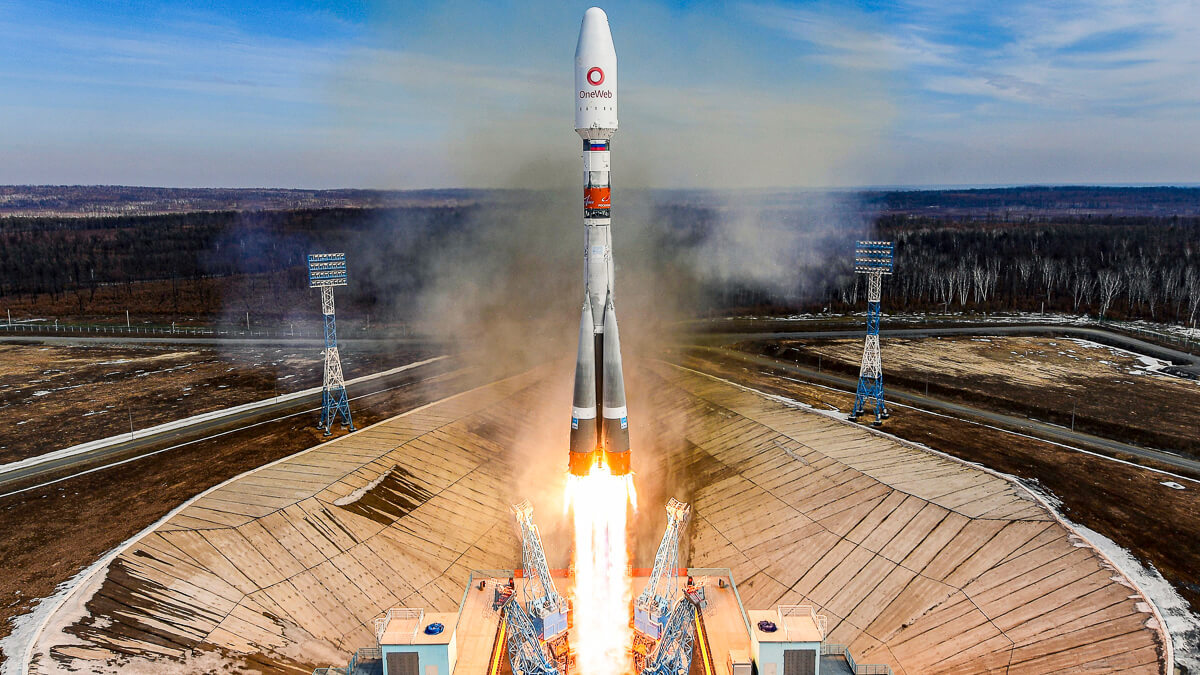
Image source: Roscosmos, Space-Center-Vostochny and TsENKi
……………………………………………………………………………………………………………………………………….
What are people saying:
“Working with OneWeb, we’ll be able to enhance high-speed connectivity in places that we don’t serve today and meet our customers wherever they are,” said Scott Mair, President, Network Engineering and Operations, AT&T. “We’re expanding our network with one more option to help ensure that our business customers have the high-speed, low-latency connectivity they need to thrive as the nation recovers from COVID-19.”
“OneWeb’s enterprise-grade network has a unique capability to serve hard-to-reach businesses and communities. Our work with AT&T will focus on how satellite technology can support improved capacity and coverage in remote, rural and challenging geographic locations,” said Neil Masterson, OneWeb Chief Executive Officer. “Today’s agreement with AT&T demonstrates OneWeb’s execution momentum and the confidence customers such as AT&T have in its services and offering.”
About OneWeb:
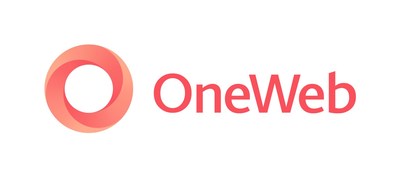
OneWeb is a global communications network powered from space, headquartered in London, enabling connectivity for governments, businesses, and communities. It is implementing a constellation of Low Earth Orbit satellites with a network of global gateway stations and a range of user terminals to provide an affordable, fast, high-bandwidth and low-latency communications service, connected to the IoT future and a pathway to 5G for everyone, everywhere. Find out more at http://www.oneweb.world
Light Reading – Satellite Internet Competition:
OneWeb’s win with AT&T also surfaces amid growing competition in the satellite broadband sector.
Enterprise and business customers are among the targets for Viasat, which is in the process of providing global coverage with a growing fleet of high-power geosynchronous (GEO) satellites. SES also focuses on the business and government services market, and intends to hit those markets harder as it moves ahead with O3b mPower, a new global connectivity platform that will ultimately comprise a constellation of 11 medium Earth-orbit (MEO) satellites. Starlink, SpaceX’s LEO-based satellite broadband service, has largely focused on the home broadband market, but has hinted at ambitions to serve connectivity to planes, trucks and other moving vehicles.
OneWeb recently landed a $300 million investment from South Korean conglomerate Hanwha Systems, which secured an 8.8% stake in OneWeb and a board seat. Other investors include India’s Bharti Airtel (35% stake), the UK government (almost 20%), and Japan’s SoftBank Group, France’s Eutelsat and Hughes Network Systems.
Earlier this month, OneWeb inked a $1 billion-plus insurance agreement through broker/risk advisor Marsh as it prepares for its next phase of deployments.
…………………………………………………………………………………………………………………………………………
About AT&T Communications:
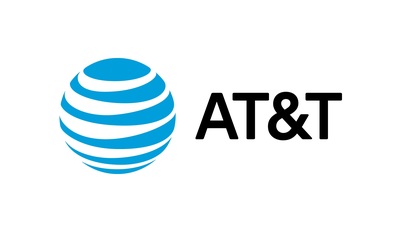
AT&T helps family, friends and neighbors connect in meaningful ways every day. From the first phone call 140+ years ago to mobile video streaming, we @ATT innovate to improve lives. AT&T Communications is part of AT&T Inc. (NYSE:T). For more information, please visit us at att.com
References:
Cignal AI: NA Optical Network Spending to Accelerate; IEEE 802.3ct; NeoPhotonics 400G Multi-Rate Transceiver
|
||
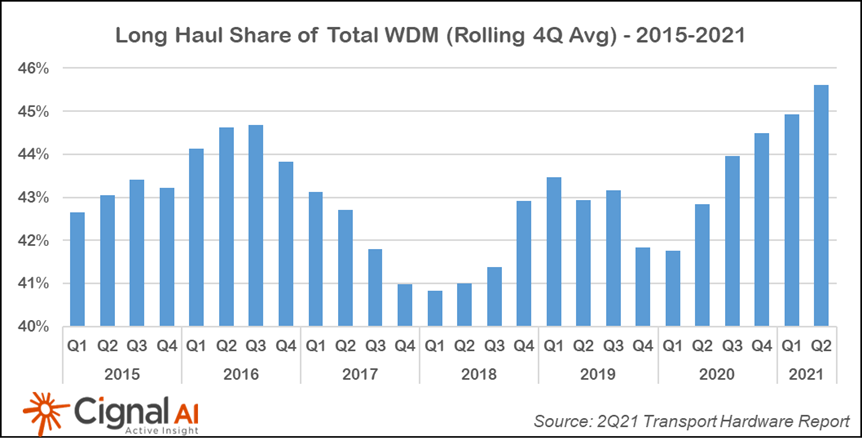 |
Additional 2Q21 Transport Hardware Report Findings:
- The spending mix between long-haul and metro WDM reached a record level following 5 quarters of investment in advanced coherent and line system technology. Carriers may be deferring metro expenditures considering the imminent availability of transport system upgrades utilizing 400G coherent pluggables.
- Chinese optical and packet hardware spending collapsed, resulting in the largest single quarterly decline on record and the first instance of consecutive quarters with YoY declines.
- Sales of optical hardware in EMEA were up significantly YoY as the region continues to produce steady single-digit growth. Despite strategic wins by Nokia and observations of increasing replacement activity from Ciena, Huawei’s footprint in EMEA shows no noticeable impact from geopolitical factors.
- North American packet transport sales were up slightly, with market leader Cisco realizing gains in Core as its 8000 series routers ramp.
- Component shortages weighed on smaller equipment manufacturers as constrained global semiconductor production increased lead times. ADVA and Infinera quantified the effect on sales (10% and 6% of revenue, respectively), though larger vendors reported minimal impact on their sales. Vendors do not anticipate resolution of these issues until 2022.
Editor’s Note: IEEE 802.3ct and 100GBASE‑ZR
It will be interesting to see if optical packet transport will evolve from to Ethernet MAC frames directly over DWDM systems. IEEE 802.3ct “Physical Layers and Management Parameters for 100 Gb/s Operation over DWDM Systems” standard was approved in June 2021 for that purpose.
Extended reach (i.e., 80 km ~50 miles or longer) optical Ethernet solutions primarily support television distribution (e.g., cable and direct-broadcast satellite) and mobile/cellular backhaul aggregation networks. A need was identified to not only support 100 Gb/s extended reach operation for these applications, but also to support up to 48 multiplexed 100 Gb/s channels over a single lane of single-mode optical fiber cabling. This amendment defines one Physical Layer (PHY) specification and management parameter for extended reach 100 Gb/s operation.
The new PHY specification is 100GBASE-ZR: A Physical layer specification supporting 100 Gb/s operation on a single wavelength capable of at least 80 km over a DWDM system. Specifically, 100 Gb/s transmission using 2‑level pulse amplitude modulation and dual polarization differential quadrature phase shift keying (DP-DQPSK) modulation over single‑mode fiber (2 fibers total), with reach up to at least 80 km.
In addition, 100GBASE-ZR is specified as part of a Dense Wavelength Division Multiplexed (DWDM) system. In this system, up to 48 100GBASE‑ZR optical signals, transmitting between the 1528.77 nm and 1566.31 nm wavelengths, can be multiplexed for operation over 2‑fiber single‑mode optical cabling referred to as a “black link”. Black link refers to a link where only the input and output link and transfer characteristics (e.g., chromatic dispersion, optical return loss, and inter-channel crosstalk) are specified, with interoperability ensured at these locations. The amendment does not specify how the black link is designed, constructed, configured, or operated. DWDM network elements inside the black link may include an optical multiplexer, an optical de‑multiplexer, and one or more optical amplifiers and no assurance of interoperability at these multichannel points is provided.
…………………………………………………………………………………………………………………………………………..
Separately, NeoPhotonics Corporation, a leading developer of silicon photonics and advanced hybrid photonic integrated circuit-based lasers, modules and subsystems for bandwidth-intensive, high speed communications networks, today announced a new, high output power version of its 400G Multi-Rate CFP2-DCO coherent pluggable transceiver with 0 dBm output power and designed to operate in metro, regional and long haul ROADM based optical networks.
“Our newest CFP2-DCO coherent pluggable module, with high output power, robust ROADM filtering tolerance and demonstrated transmission over 1500 km, allows customers to use one coherent pluggable solution to cover essentially all metro ROADM use cases, simplifying network design, enabling disaggregation, and lowering inventory costs.” said Tim Jenks, Chairman and CEO of NeoPhotonics. “The key to achieving line card equivalent performance in a pluggable module, but with significantly lower power than a line card, is the vertical integration of our optical solution and Nano tunable laser,” concluded Mr. Jenks.
References:
https://www.neophotonics.com/press-releases/?newsId=12741
Tata Communications and Telekom Malaysia partner for IP transit services in ASEAN region
Telekom Malaysia Berhad (TM), Malaysia’s national connectivity and digital infrastructure provider through its global and wholesale arm, TM WHOLESALE and Tata Communications, a global digital ecosystem enabler’s wholly-owned subsidiary, Tata Communications International Pte Ltd., join forces to offer stable, high-speed and reliable connectivity in the ASEAN region and open access to global enterprises.
This collaboration will enable service providers, mobile network operators and internet service providers in the region to address their customers’ growing data connectivity needs by providing access to a global Tier 1 Internet Protocol (IP) network. This will help deliver reliable, stable Tier-1 IP Transit (IPT) service, an internet connectivity service that enables end-users to access all websites and content on the internet. This will further boost sectors such as e-commerce, online entertainment, retail, online banking and delivery services that have accelerated in recent times.
As part of this arrangement, Tata Communications expands its IPT service coverage leveraging TM’s data center, extensive connectivity and network infrastructure in Malaysia. This collaboration will also enable Tata Communications to optimize TM’s reachability within the ASEAN region through terrestrial networks and submarine cables to the neighboring countries. The submarine cables include the Malaysia-Cambodia-Thailand submarine cable for connectivity to Indochina and, Nusantara Gateway submarine cable for connectivity to Indonesia.
At the same time, TM will benefit from Tata Communications global Tier-1 IP network to serve customers in more than 190 countries and territories hence further extending TM’s IP transit coverage and enhances its regional TMiX offering.
Commenting on the collaboration, Amar Huzaimi Md Deris, Executive Vice President of TM WHOLESALE, stated, “We are delighted to work with a renowned global player like Tata Communications, to fulfil our role as the digital infrastructure accelerator in Malaysia. This is part of our effort to enhance our internet service performance with expanded global reach for service providers in Malaysia and neighboring countries to meet the growing IP networks requirements. This collaboration underscores our commitment to our customers for delivering world class network service, brings us one step further to achieve our aspiration as the trusted digital hub in the ASEAN region. It also signifies our commitment to support the Malaysia Digital Economy Blueprint (MyDIGITAL) initiative towards enabling Digital Malaysia.”
Sumeet Walia, Chief Sales and Marketing Officer, Tata Communications, said, “The service provider ecosystem across the ASEAN region will benefit from our joining forces with TM and enabling access to a Tier-1 internet provider transit connectivity that provides scale and a fillip to boosting the economy. By offering high-capacity and low-latency IP transit services to and from Malaysia for both our customers, we bring forth synergies for a more robust, secure and flexible IP platform.”
SOURCE: Tata Communications
………………………………………………………………………………………………………………………….
Contacts:
Floyd Almeida
Tata Communications
+91 98-9247-6208
[email protected]
Asma Binti Abdul Aziz
Telekom Malaysia Berhad
[email protected]
Jane Goh
IN.FOM
A Partner of Chime on behalf of Tata Communications
[email protected]
TPG Telecom & Ericsson partner for 5G SA core network; Ericsson’s Intelligent Deployment
Australia’s TPG Telecom and Ericsson have announced the completion of the virtualization of TPG Telecom’s core network and a new partnership to deploy its 5G standalone core network.
With the virtualization of TPG Telecom’s core network, the telco will become the first operator in Australia to have its entire 4G and 5G customer base on a virtualized platform. Virtualization of TPG Telecom’s core network is the result of a multi-year partnership between TPG Telecom and Ericsson.
Building on the success of the virtualization program, TPG Telecom has extended its partnership with Ericsson to include the deployment of its 5G Core for standalone network. Ericsson’s cloud native dual-mode 5G Core will drive service and technology innovation for TPG Telecom’s customers.
The completion of TPG Telecom’s 5G standalone Core Network will assist the operator to cover 85 per cent of the population in ten of Australia’s largest cities and regions with its 5G network by the end of this year, whilst enabling it to deliver innovative services and emerging industry 5G applications with greater flexibility and scalability.
The 5G Core network is based on future-proof network architecture that will enable TPG Telecom to combine 4G and 5G technologies on one platform, delivering tailored services for its customers through network slicing, network exposure, and edge capabilities. The new cloud-native 5G Core network will deliver the full benefits of automation and enhance 5G customer experience through improved network speed, latency, and coverage.
TPG Telecom Executive General Manager Mobile and Fixed Networks Barry Kezik, said: “The virtualization of our core network has enabled us to fast-track our 5G rollout without disrupting 4G services.
“By introducing our new 5G Core network, we are ensuring that we can significantly expand our 5G coverage whilst introducing new and innovative 5G industry applications that are tailored to enterprises.”
Emilio Romeo, Head of Ericsson, Australia and New Zealand, said: “This achievement is a testament to the strong and ongoing partnership that we have with TPG Telecom. The virtualisation of its core network will be critical in unleashing the potential of 5G using Ericsson’s market leading 5G Core solutions.”
“I am looking forward to continue building our partnership with TPG Telecom as we support the deployment of a 5G standalone that will truly enable everyday consumers and enterprise to harness the potential of 5G.”
The successful virtualization of TPG Telecom’s Core network was enabled by the Telco Cloud Transformation partnership between TPG Telecom and Ericsson which delivered a leading-edge horizontal NFVI platform to virtualize TPG Telecom’s Core network and a range of multi-vendor network functions. This partnership has now been expanded to evolve the NFVI platform to a Cloud-native, container based environment, which will allow TPG Telecom to deploy Cloud-native Network Functions (CNFs) , including Ericsson’s dual-mode 5G Core.
The mobile network owned by TPG Telecom provides services to Vodafone, TPG, iiNet, Lebara, felix and Kogan mobile customers. TPG Telecom’s 5G services are available in selected areas in more than 700 suburbs around Australia and the company currently has around 1,600 sites in the planning and design phase. TPG Telecom’s plan is to cover 85% of the population in ten of Australia’s largest cities and regions by the end of 2021 for customers with a compatible 5G approved device.

Image Credit: Ericsson
……………………………………………………………………………………………………………………………………………..
In semi-related news, Ericsson has announced the launch of Intelligent Deployment, a suit of tools and services designed to help operators with network rollout and upgrade. As the name implies there’s lots of emphasis on AI and generally doing this sort of thing in a smarter way. This means addressing the needs of a cell site according to its specific circumstances and the particular needs of the network at a given time.
“With our Intelligent Deployment solution, we are vastly improving the way we deploy networks, making it more agile, flexible and responsive to customer needs,” said Nello Califano, Head of Strategy and Portfolio Management, Ericsson Business Area Networks. “This means we can deliver parts of our portfolio to service providers based on their specific requirements.
“We use extensive data insights to offer new services as well as pre-empt problems when introducing intelligent monitoring of the network even after end of deployment. By investing more in our network services, we create better solutions for our customers.”
References:
https://www.ericsson.com/en/news/2021/9/ericsson-launches-intelligent-deployment-network-solutions
MoCA Link™ point-to-point coax link for broadband services delivered by 5G FWA, Fiber PON, or Satellite
The Multimedia over Coax Alliance (MoCA) is working on a new standard that endeavors to bridge the gap between outdoor broadband access network devices and the residential broadband gateway inside a customer’s home. The alliance’s MoCA Link™ provides a symmetrical multi-gigabit, sub-millisecond latency, point-to-point coax link for broadband services. It will be able to connect 5G fixed wireless access, satellite or PON broadband devices on the side of the home or on the roof to the in-home Wi-Fi router. Please refer to diagram below.
MoCA Link is a peer-to-peer link for satellite and other network services operators, enabling the re-use of pre-installed RG6 coaxial cabling to link receivers on the outside of a home to the gateway inside the home. Satellite and 5G need a network connectivity solution that can provide a reverse power feed from inside the home to outside the home. MoCA Link™ features the robust reverse power feed 5G and satellite providers need.
The MoCA Link™ spec is slated for completion by late this year. Dr. Jim Crammond, MoCA’s president, says that MoCA Link will effectively pair existing MoCA 2.5 silicon to new firmware that enables the new point-to-point connectivity bridge for 5G, satellite and fiber-based broadband services.
“MoCA Link™ 2.5 delivers the ultra-fast speed, high bandwidth and low latency that customers want with the ease of installation that service providers need,” said MoCA President Dr. Jim Crammond. “The Alliance’s inherent expertise in new applications for pre-installed coax cabling lets broadband service providers link receivers on the outside of a home to a gateway inside the home simply, efficiently, and cost-effectively.”
Here are a few attributes of MoCA Link™:
- Point to point connection designed specifically for 5G, Fiber PON and Satellite
- Ultra-low latency of less than 1 millisecond
- Allows low-cost access termination on the street, roof, or outside wall of the premise
- Enables reverse power feed
- Based on MoCA Home™ 2.5 technology
- 2.5 Gbps
- Will be extended to MoCA Link™ 3.0 (10 Gbps)
- Ease of deployment using existing coaxial cabling
- Multi-Gigabit speeds
- Ease of deployment reusing deployed coaxial cabling
- Operating frequency range of 400MHz – 1675MHz.
- Co-exist with TV, DOCSIS and cellular (4G/5G) technologies.
- Supports standard traffic shaping and QoS up to four (4) queue in actual applications.
- Strong security support
- Three transmission power modes with 45dB, 55dB or 65dB link budgets and power saving
modes.
Applications include the following:
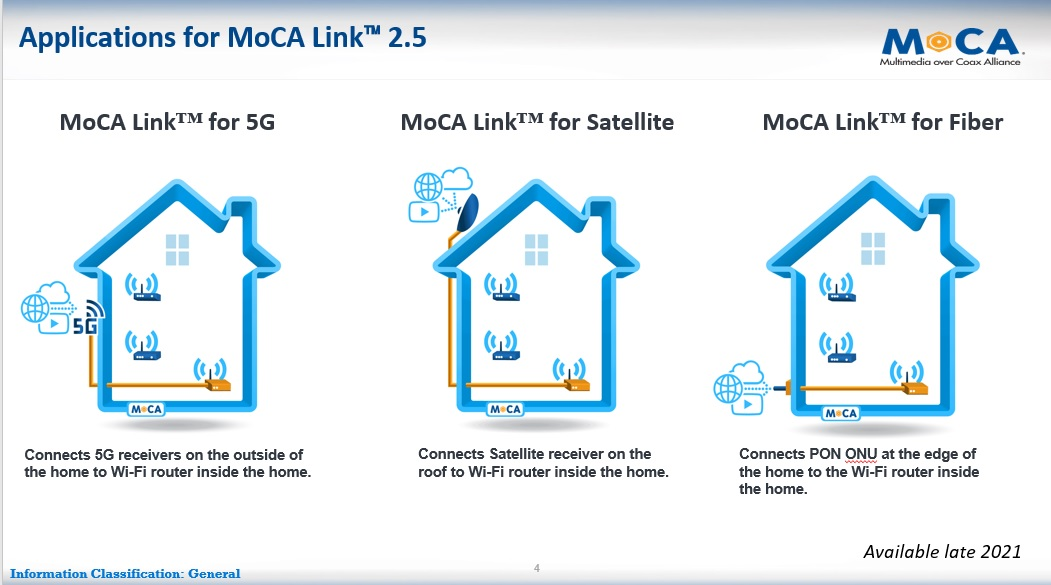
For 5G, MoCA Link™ is a point to point technology to solve for the 5G challenge of bringing millimeter wave signals, that don’t penetrate buildings well, into the home. We also re-architected parts of the MAC to meet sub-millisecond ultra-low latency requirements.
For Fiber, MoCA Link can terminate on the street, not in the home, making MoCA Link a valuable PON extension.
For Satellite, (underserved rural areas) connecting to broadband can be as simple as:
- Change out an old satellite TV dish for a satellite receiver/transmitter with MoCA Link™
- Reuse the coax already there, and
- Connect to the in-home broadband gateway.
MaxLinear, which has MoCA 2.5 silicon in its product set, is among the suppliers working on MoCA Link technology. Dr. Crammond joined MaxLinear when the company acquired Intel’s Home Gateway Platform division in August 2020.
Here’s a chart depicting MoCA Technology Standards:
References:
http://www.mocalliance.org/mocalink/
https://www.totaltele.com/510870/New-MoCA-standard-MoCA-Link
Exium Collaborates with IBM on Secure Edge Compute for AI and IoT Applications
Exium, a 5G security company [1.], today announced that it is collaborating with IBM to help clients adopt an edge computing strategy designed to enable them to run AI or IoT applications seamlessly across hybrid cloud environments, from private data centers to the edge. Exium offers clients an end-to-end AI deployment solution designed for high performance on the Edge that can extend to any cloud. This platform can help clients address vendor lock-in by providing flexibility to run their centralized Data/AI resources across any cloud or in private data centers.
Note 1. Exium was founded in 2019 by wireless telecommunications entrepreneur Farooq Khan (ex-Phazr, ex-JMA Wireless). The company believes that the current Cybersecurity Model is broken. Existing cybersecurity approaches and technologies simply no longer provide the levels of security and access control modern digital organizations need. These organizations demand immediate, uninterrupted secure access for their users, teams, and IoT/ OT devices, no matter where they are located.
Exium’s Intelligent Cybersecurity Mesh™ (see diagram below) provides secure access for a distributed workforce, IoT devices, and mission-critical Operational Technology (OT) infrastructure, protecting businesses from malware, ransomware, phishing, denial of service, and botnet infections in one easy to use cloud service.
CyberMesh consolidates three technologies, 5G, Secure Access Services Edge, or SASE, and Extended Detection and Response, or XDR in a single powerful cloud platform.
The Intelligent Cybersecurity Mesh is the first network security platform rooted in internationally accepted digital trust standards and is a reflection of Exium’s commitment to an open, interoperable, and secure global internet for all.
……………………………………………………………………………………………………………………………………………
Exium’s Secure Edge AI is designed to provide a secured, highly performant Edge for IoT data collection and AI execution that works with WiFi/Ethernet/4G today and will be able to assist enterprises to upgrade to 5G in the future.
Exium’s CyberMesh is designed to deliver Zero-Trust Edge Security, Intent-Driven Edge Network Performance, and connect Edge and Cloud locations to help provide scalability and resilience out of the box. Zero-Trust Edge Security addresses trust assumptions to help build the connection between users, devices, and edge applications. Intent-Driven Edge Network enables edge applications to influence the 5G network for traffic routing, steering and QoS control.
“With computing done in so many places—on public and private clouds and the edge–we believe the challenge that businesses face today is to securely connect all these different elements into a cohesive, end-to-end platform,” said Farooq Khan, Founder & CEO at Exium. “Through our collaboration, Exium plans to integrate with IBM Edge Application Manager to offer edge solutions at scale for our clients.”
“We look forward to collaborating with Exium to help clients deploy, operate and manage thousands of endpoints throughout their operations with IBM Edge Application Manager,” said Evaristus Mainsah, GM, IBM Hybrid Cloud and Edge Ecosystem. “Together, we can help enterprises accelerate their digital transformation by acting on insights closer to where their data is being created, at the edge.”
A recent IBM Institute for Business Value report, “Why organizations are betting on edge computing: Insights from the edge,” revealed that 91% of the 1,500 executives surveyed indicated that their organizations plan to implement edge computing strategies within five years. IBM Edge Application Manager, an autonomous management solution that runs on Red Hat OpenShift, enables the secured deployment, continuous operations and remote management of AI, analytics, and IoT enterprise workloads to deliver real-time analysis and insights at scale. The introduction of Intel® Secure Device Onboard (SDO) made available as open source through the Linux Foundation, provides zero-touch provisioning of edge nodes, and enables multi-tenant support for enterprises to manage up to 40,000 edge devices simultaneously per edge hub. IBM Edge Application Manager is the industry’s first solution powered by the open-source project, Linux Foundation Open Horizon.
Exium is part of IBM’s partner ecosystem, collaborating with more than 30 equipment manufacturers, networking, IT & software providers to implement open standards-based cloud-native solutions that can autonomously manage edge applications at scale. IBM’s partner ecosystem fuels hybrid cloud environments by helping clients manage and modernize workloads from bare-metal to multicloud and everything in between with Red Hat OpenShift, the industry’s leading enterprise Kubernetes platform.
About Exium:
Exium is a U.S. full-stack cybersecurity and 5G clean networking pioneer helping organizations to connect and secure their teams, users, and mission-critical assets with ease, wherever they are.
To learn more about Exium, please visit https://exium.net/
About Farooq Khan, PhD:
Before founding Exium, Farooq Khan was founder and CEO of PHAZR, a 5G Millimeter wave radio network solutions company that was sold to JMA Wireless . Before that he was the President and Head of Samsung Research America, Samsung’s U.S.-based R&D unit, where he led high impact collaborative research programs in mobile technology. He also held engineering positions at Bell Labs, Ericsson and Paktel.
Farooq earned a PhD in Computer Science from Université de Versailles Saint-Quentin-en-Yvelines in France. He holds over 200 U.S. patents, has written over 50 research articles and a best-selling book.
ManTech and Google Cloud open joint facility to expedite government adoption of cloud technologies
In April, Google Cloud announced a partnership with ManTech to accelerate US government adoption of cloud technologies. The partnership will combine Google Cloud technology and security capabilities with ManTech’s federal solution delivery capability and public sector domain expertise. The two companies will launch a joint demonstration facility in Northern Virginia to showcase their combined technology capability.
Together, ManTech and Google Cloud’s full range of capabilities and technology know-how can meet government needs across multi and hybrid cloud environments, infrastructure modernization, application development, data management, artificial intelligence, analytics, and cybersecurity. This will enable the two companies to jointly assist agencies with core areas of modernization including multi-cloud and hybrid cloud adoption, hyperscale analytics, security, 5G, and edge-computing.
Google Cloud’s partnership with ManTech was said to be a critical step toward meeting the federal customer mission by expediting cloud adoption, and helping to solve the government’s unique challenges with new solutions and capabilities. As the need for cloud adoption has accelerated, and cybersecurity threats continue to destabilize our critical infrastructure, strategic private sector partnerships that support U.S. government interests have a key role to play in facilitating remote collaboration, and securing the welfare of Americans.

References:
Bharti Airtel working with partners to enable 5G use cases in India
Bharti Airtel said that it is engaging new partners to enable 5G use cases for various consumer and enterprise use cases in India. It will also start a campaign to educate users about their next 5G smartphone to ensure if they can get the best experience with support to all relevant bands.
A handset to support all possibilities of 5G is very important, Bharti Airtel’s chief technology officer Randeep Sekhon told ET. Airtel will come out with a campaign for users who want to buy 5G handsets informing them about various checks of their particular handsets to make sure the handset works well in India across not just 5G but various other bands and carrier aggregation. “This is important when you choose a 5G handset to get the best experience,” he said.
The Sunil Mittal-led telecom operator had recently urged the India Department of Telecommunications to bring uniform guidelines to develop the 5G smartphone ecosystem. It recommended that any new 5G handset sold in India must support all existing bands in India for 5G, including the mmWave bands.
Indian telecom operators have spectrum in the 2G, 3G and 4G bands which can be refarmed and used for 5G NSA or 5G SA and also use Dynamic Spectrum Sharing (DSS) for fast deployment. They want handset brands to support all existing spectrum bands like 1800/2100/2300 MHz and sub-GHz bands 800/900 Mhz.
The telecom operator said that it successfully conducted a cloud gaming session on its 5G trial network in Manesar using the 3.5GHz spectrum band. Sekhon said that “immersive entertainment” will be another major consumer use case of 5G. “But, for A/R and V/R, content needs to be created and be personalized at the edge. We are seeing how we can make it real.”
Airtel is currently using the 3.5 GHz spectrum band for 5G trials in Delhi-NCR and Mumbai. Sekhon said that the telco hasn’t started 5G trials using mmwave band. “As and when we will get equipment, we will try that too. 3.5 GHz anchored with traditional 4G bands are currently being used for trials.”
“For the B2B, industry 4.0, high speed, high latency and mass concurrency around IoT cloud and 5G are required.. We are working with many of our industry customers on creating fir infra, FMCG, factory, mining. This will be relevant,” Sekhon added.
The CTO said that telecom operators can’t do everything by themselves and their main focus is to build the best infrastructure to enable partners. Airtel, he said, will have various partners to enable 5G use cases like education, e health and for industries.
“Some partnerships are for initial 5G trials and some will for massifying the roll out. The 5G real experience will happen when all stakeholders ecosystem partners are available,” Sekhon said.

Dell’Oro Group increases Open RAN radio and baseband revenue forecast
Dell’Oro Group has revised their Open RAN radio and baseband forecast. Total cumulative Open RAN revenues are now projected to approach $10B to $15B between 2020 and 2025.
“The momentum with both commercial deployments and the broader Open RAN movement continued to improve during 1H21, bolstering the thesis that Open RAN is here to stay,” said Stefan Pongratz, Vice President and analyst with the Dell’Oro Group. “We are adjusting the forecast upward to reflect the higher baseline and the improved pipeline,” continued Pongratz.
Additional highlights from the Dell’Oro Group Open RAN Advanced Research Report:
- Open RAN revenues are expected to account for more than 10 percent of the overall RAN market by 2025, reflecting healthy traction in multiple regions with both basic and advanced radios.
- Open RAN Massive MIMO projections have been revised upward to reflect the improved competitive landscape and the improved market sentiment with upper mid-band Open RAN.
- The shift towards Virtualized RAN (V-RAN) is progressing at a slightly slower pace than Open RAN. Still, total V-RAN projections remain relatively unchanged, with V-RAN expected to approach $2 B to $3 B by 2025.
Separately, Stefan wrote:
The long-term open RAN vision is built on three key pillars including open interfaces, virtualized technologies and vendor neutral multi-vendor deployments. In addition to leading the industry toward open and interoperable interfaces, the long-term roadmap maximizes the use of COTS hardware and minimizes the reliance on proprietary hardware (O-RAN Alliance).
Taking into consideration that one of the primary objectives is to capture the overall movement toward open RAN and the fact that it will take some time to realize the broader vision, it is somewhat implied that there will be room for interpretation when it comes to capturing this movement and tracking the open RAN market.
And within each of these pillars, there will be various degrees of compliance. Multi-vendor deployments are often associated with mixing and matching baseband and radio suppliers. But when Mavenir introduced the term “True Open RAN,” it meant true mixing and matching across the board – they want to work with anyone with any component. If someone gives them a radio they should be able to integrate it with their software. And vice versa, if another supplier provides the software “True Open RAN” would enable them to make it work with their Massive MIMO radios.
Not surprisingly, there is room for interpretation with the other building blocks as well. Open RAN compatible radios are now proliferating across the supplier landscape. But it is not always clear after browsing the data sheets what this entails from an open RAN specifications, customization and coverage perspective. With five interfaces (A1, E2, O1, O2, Open FH), multiple functions (SMO, Non-Real time RIC, Near-Real-Time RIC), and a confluence of profiles, there is not an abundance of confidence that the open RAN maturity would be consistent across the board.
The Dell’Oro Group Open RAN Advanced Research Report offers an overview of the Open RAN and Virtualized RAN potential with a 5-year forecast for various Open RAN segments including macro and small cell, regions, and baseband/radio. The report also includes projections for virtualized RAN along with a discussion about the vision, the ecosystem, the market potential, and the risks.
To purchase this report, please contact [email protected]
…………………………………………………………………………………………………………………………………..
Rebuttal: Open RAN Forecasts Way too High!
While not a market analyst cranking out forecasts, this author believes the Open RAN market will be a huge disappointment and revenues will be much lower than Dell’Oro and other market research firms forecast.
As Light Reading has correctly said, Open RAN is trading one type of vendor lock-in for another.

Trading one version of vendor ‘lock-in’ for another? Image Credit: Light Reading
That’s because the O-RAN Alliance specs have not led to vendor neutral interoperability, but rather partnerships amongst vendors to provide a complete Open RAN solution.
O-RAN Alliance Threatened:
The O-RAN Alliance is in a crisis because of U.S. sanctions against Chinese vendors in the group has troubled Nokia and Ericsson. In particular, the recent addition to the American “entity list” of three Chinese members of the Alliance. Kindroid, a semiconductor company, Phytium, a supercomputing company, and Inspur, a compute server vendor, have been accused of working with the Chinese military, and have joined 260 other Chinese companies, including, Huawei, on the entity list.
A few days after Nokia decided to suspend its technical activity with the O-RAN Alliance, in fear of American punishment over its engagement at the forum with companies recently put on the American “entity list,” Ericsson expressed similar concerns.
It should not be a surprise that, given O-RAN Alliance’s legacy (born out of a merger of the American-led xRAN Forum and the Chinese-led C-RAN Alliance), there are a strong Chinese contingency. According to Strand Consult, by the end of 2020, 44 of the 200 odd Alliance members are companies from China. Also of concern is this post by Mr. Strand, What NTIA won’t tell the FCC about OpenRAN.
References:
Open RAN Forecast Revised Upward, According to Dell’Oro Group
https://www.fiercewireless.com/tech/not-all-open-ran-same-industry-voices-pongratz
https://techblog.comsoc.org/?q=Open%20RAN#gsc.tab=0&gsc.q=Open%20RAN&gsc.page=1
https://techblog.comsoc.org/?q=Open%20RAN#gsc.tab=0&gsc.q=Open%20RAN&gsc.page=2
https://techblog.comsoc.org/2020/12/04/omdia-and-delloro-group-increase-open-ran-forecasts/


